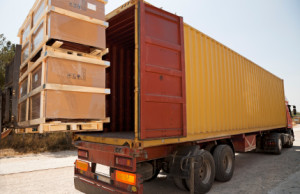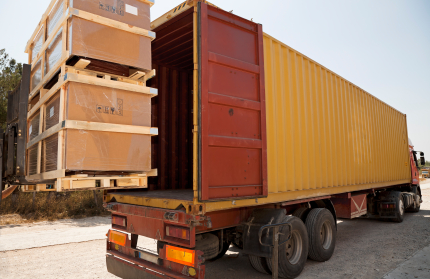 The Bureau of Customs (BOC) is suspending immediate implementation of an order that restricts laden export boxes without their corresponding processed export declarations from entering the Manila International Container Port (MICP) yard.
The Bureau of Customs (BOC) is suspending immediate implementation of an order that restricts laden export boxes without their corresponding processed export declarations from entering the Manila International Container Port (MICP) yard.
In a meeting on August 12 attended by officials of the Association of International Shipping Lines (AISL), Philippine International Seafreight Forwarders Association and Philippine Exporters Confederation, Inc. (PhilExport), BOC-MICP agreed to suspend until October 1 implementation of its August 4 order, signed by BOC-Customs Container Control Division (CCCD) chief Fidel Villanueva IV and Export Division chief Joji Dondina and noted by MICP district collector Elmir Dela Cruz.
The new implementation date may even be further adjusted, depending on the port situation.
Under the memo, empty containers also had to be cleared by CCCD before they could enter the container yard.
AISL general manager Atty Maximino Cruz told PortCalls in an email that the association “appealed for suspension (of the memorandum) in view of the ongoing efforts” by the Cabinet Cluster Committee to declog Manila ports of laden and empty containers.
“We explained that decongestion measures are already under way and implementation of the memo will slow down the process,” Cruz said.
He noted that foreign shipping lines have, as it is, deployed sweepers to pick up empty containers to help clear the ports and free up more space at the soonest time possible.
“Clearing the ports of containers, be it loaded and empty, will automatically produce a chain reaction to the offdock depots as the empties stored inside will now start to move,” Cruz explained.
On the other hand, local shippers/exporters “cannot afford the slightest delay in shipping out of their goods because they have their own respective deadlines to meet and failing such, the competitiveness of Philippine exports in the global market is placed in serious jeopardy,” he pointed out.
Leo Morada, chief executive officer of BOC-accredited value-added service provider (VASP) Cargo Data Exchange Corp., earlier told PortCalls the BOC-MICP order would have adverse effects on less-than-containerload shipments “since time is needed to complete stuffing into one container export shipments from several exporters.”
It has been a long-time practice to submit export declarations only after laden containers have been sent to the ports.
PhilExport assistant vice president for Advocacy Ma. Flordeliza Leong, who attended the August 12 meeting, told PortCalls in an email that MICP collector Dela Cruz said the order is not new and that the agency is only implementing existing policies in the BOC operations manual created during the time of former Commissioner Napoleon Morales.
Stakeholders, however, argued they were not consulted beforehand.
Leong said the order is feasible but “difficult (to implement) now because of the port congestion”.
She noted the new October 1 implementation date may even be adjusted “according to the port situation.”
Although yard utilization at Manila ports is now somewhat easing, the government said it expects a 20% increase in imports when the peak shipping season kicks in beginning September.
Leong said closer coordination will be needed among the ports, shipping lines, VASPs and customs brokers “so that everything synchronizes” and the order is followed properly.
Export declarations are electronically lodged in the BOC’s electronic-to-mobile (e2m) system through VASPs, as stipulated under Customs Memorandum Order No. 54-2010 and CMO No. 7-2012.
The export declaration single administrative document (ED-SAD), which is the electronic representation of an export declaration, is lodged in the e2m’s Automated Export Declaration System and then submitted to the CCCD to match with the export declaration.
If the export declaration and the ED-SAD match, the CCCD officer will clear the cargo for loading. – Roumina Pablo





